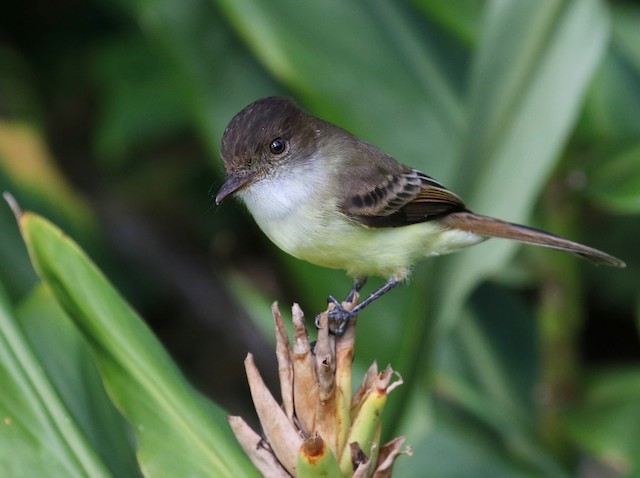Birdfinding.info ⇒ Generally common throughout Jamaica, and can be found at all of the sites frequented by visited birdwatchers, such as Rocklands Bird Sanctuary, Stewart Town, Marshall’s Pen, Robin’s Bay, Hardwar Gap, San San, and Ecclesdown Road.
Sad Flycatcher
Myiarchus barbirostris
Family: Tyrannidae
Endemic to Jamaica, where it occurs throughout the island in woodlands and semiopen areas, including gardens. More numerous in humid than in dry habitats.
Identification
A small Myiarchus with a dark cap, pale throat and chest, and otherwise lemon-yellow underparts. Its wings are mostly dark, with muted wingbars, and thin, whitish margins only on the tertials.
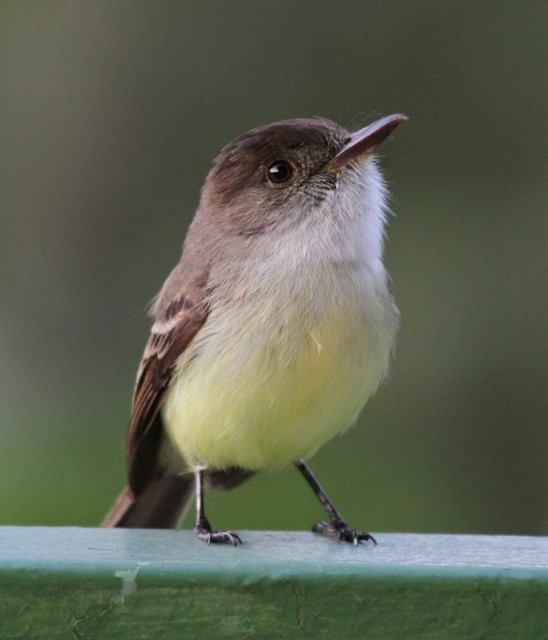
Sad Flycatcher. (Silver Hill Gap, Jamaica; April 28, 2016.) © Frank Mantlik
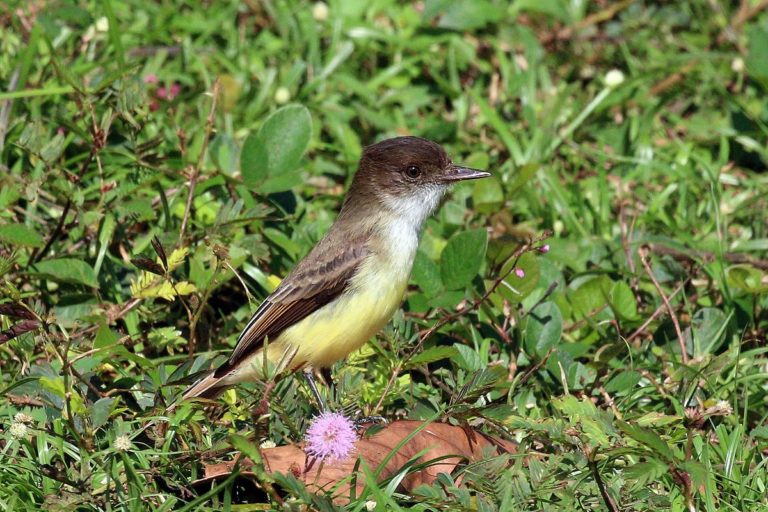
Sad Flycatcher. (Stewart Town, Jamaica; February 13, 2016.) © Charles J. Sharp
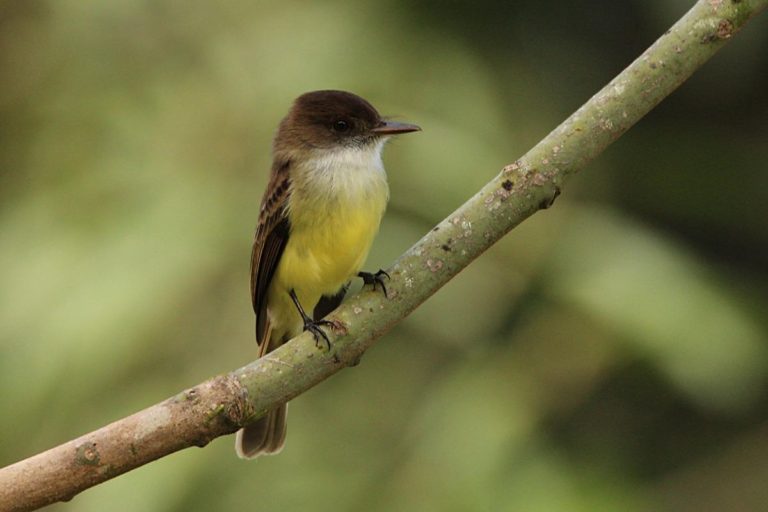
Sad Flycatcher. (Windsor, Jamaica; February 4, 2014.) © Jeremy Gatten
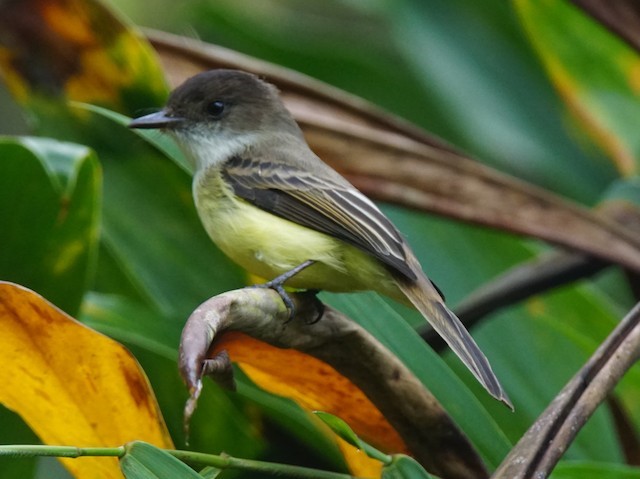
Sad Flycatcher. (Hardwar Gap, Jamaica; January 11, 2018.) © Nevine Jacob
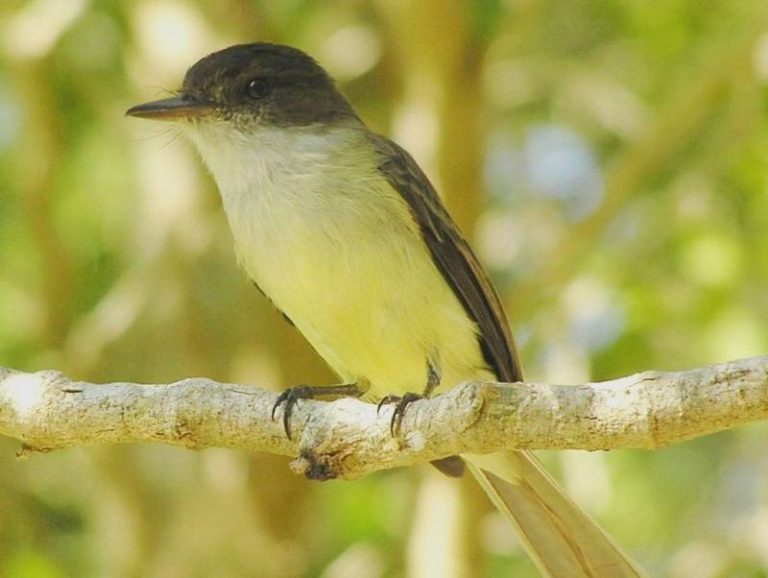
Sad Flycatcher. (Mona, Jamaica; January 20, 2007.) © Jan van den Broeck
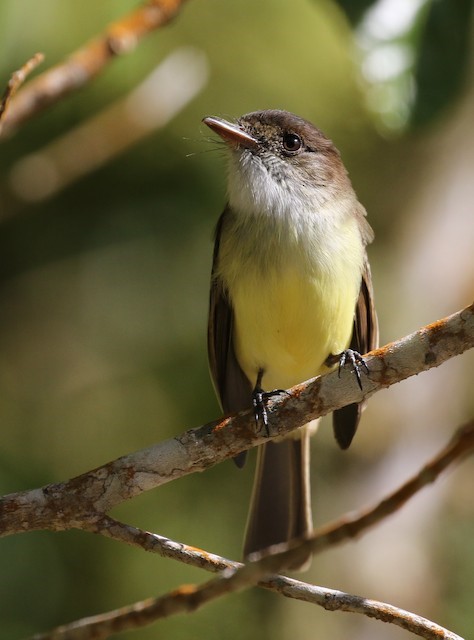
Sad Flycatcher. (Hardwar Gap, Jamaica; January 28, 2019.) © Michael Woodruff
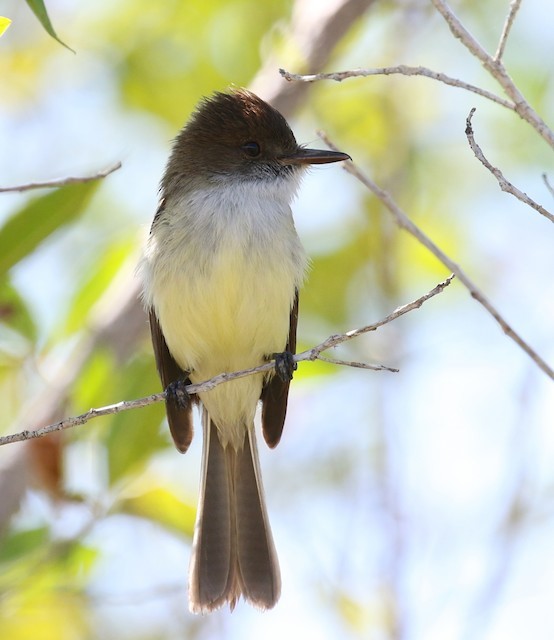
Sad Flycatcher. (Parottee Pond, Jamaica; February 1, 2019.) © Matthew Grube
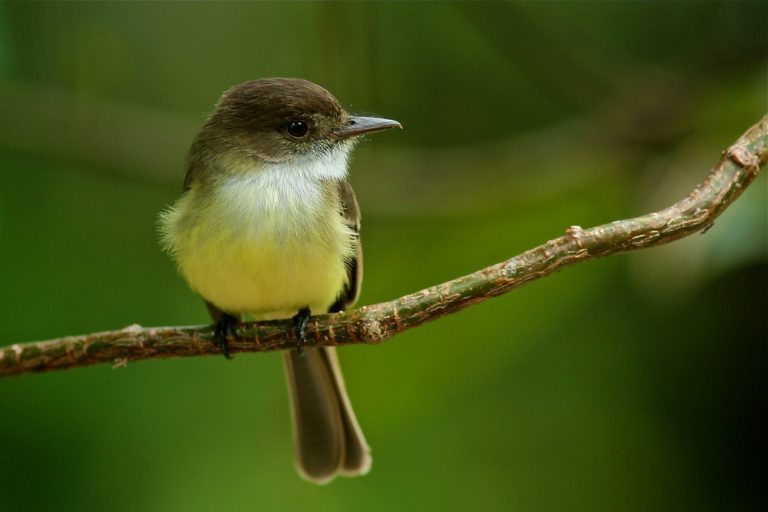
Sad Flycatcher. (Hotel Mockingbird Hill, San San, Jamaica; March 19, 2009.) © Paul B. Jones
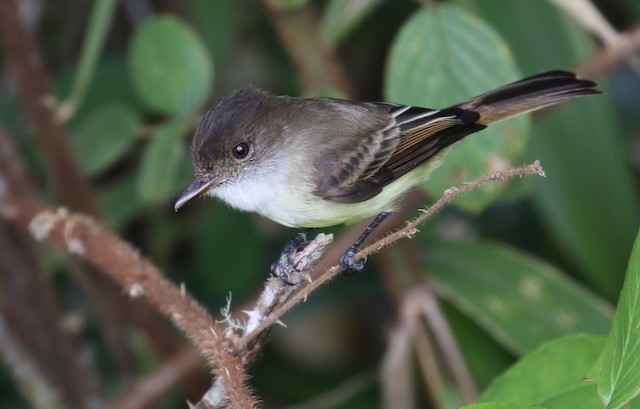
Sad Flycatcher, showing whitish margins on the tertials. (Hardwar Gap, Jamaica; January 28, 2019.) © Michael Woodruff
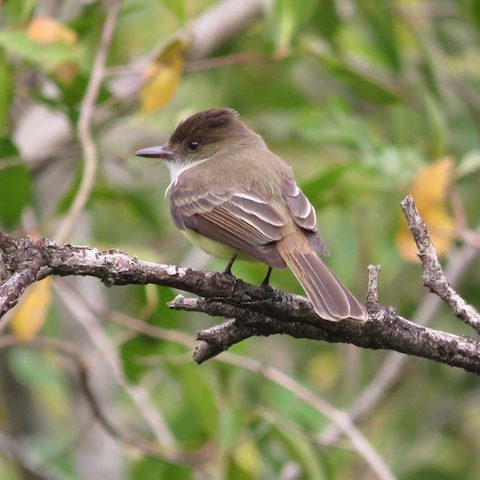
Sad Flycatcher, showing whitish margins on the tertials and rusty tone on the rump. (Font Hill Nature Preserve, Jamaica; February 18, 2013.) © Garrett MacDonald
Cf. Stolid Flycatcher. Sad is most likely to be confused with the slightly larger Stolid Flycatcher, which predominates in drier areas, though they overlap. Plumage differences are distinctive if seen well. The yellow wash on Sad’s belly extends higher on the breast. On the wings, Stolid has extensive, boldly contrasting whitish margins, including the wingbars and most of the flight feathers, except the primaries, which have rufous edges. Sad’s wing feathers have muted, pale-brown margins, including the wingbars, and are whitish only on the tertials.
Notes
Monotypic species.
References
eBird. 2019. eBird: An online database of bird distribution and abundance. Cornell Lab of Ornithology, Ithaca, N.Y. http://www.ebird.org. (Accessed February 10, 2019.)
Haynes-Sutton, A., A. Downer, R. Sutton, and Y.-J. Rey-Millet. 2009. A Photographic Guide to the Birds of Jamaica. Princeton University Press, Princeton, N.J.
Raffaele, H., J. Wiley, O. Garrido, A. Keith, and J. Raffaele. 1998. A Guide to the Birds of the West Indies. Princeton University Press, Princeton, N.J.
